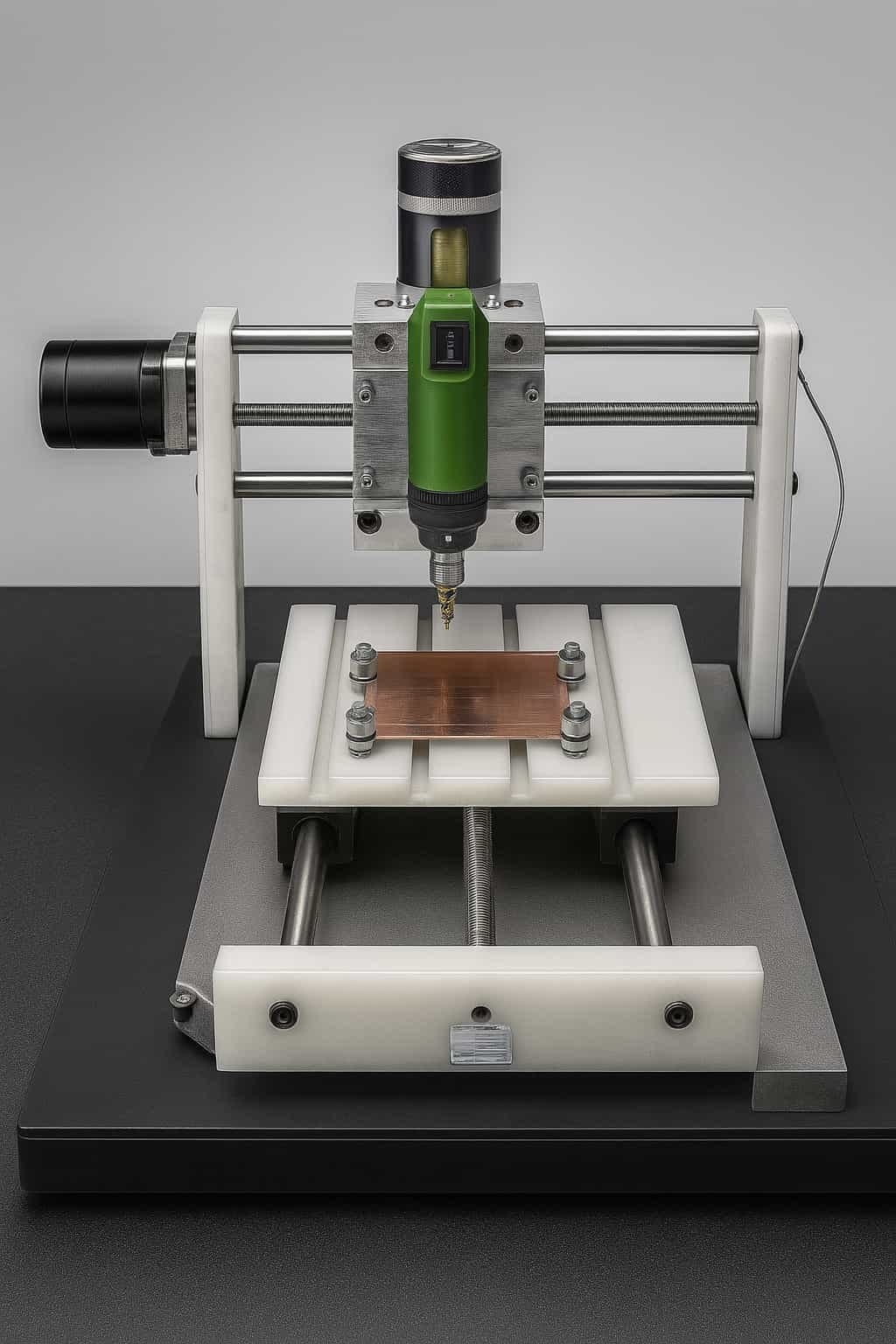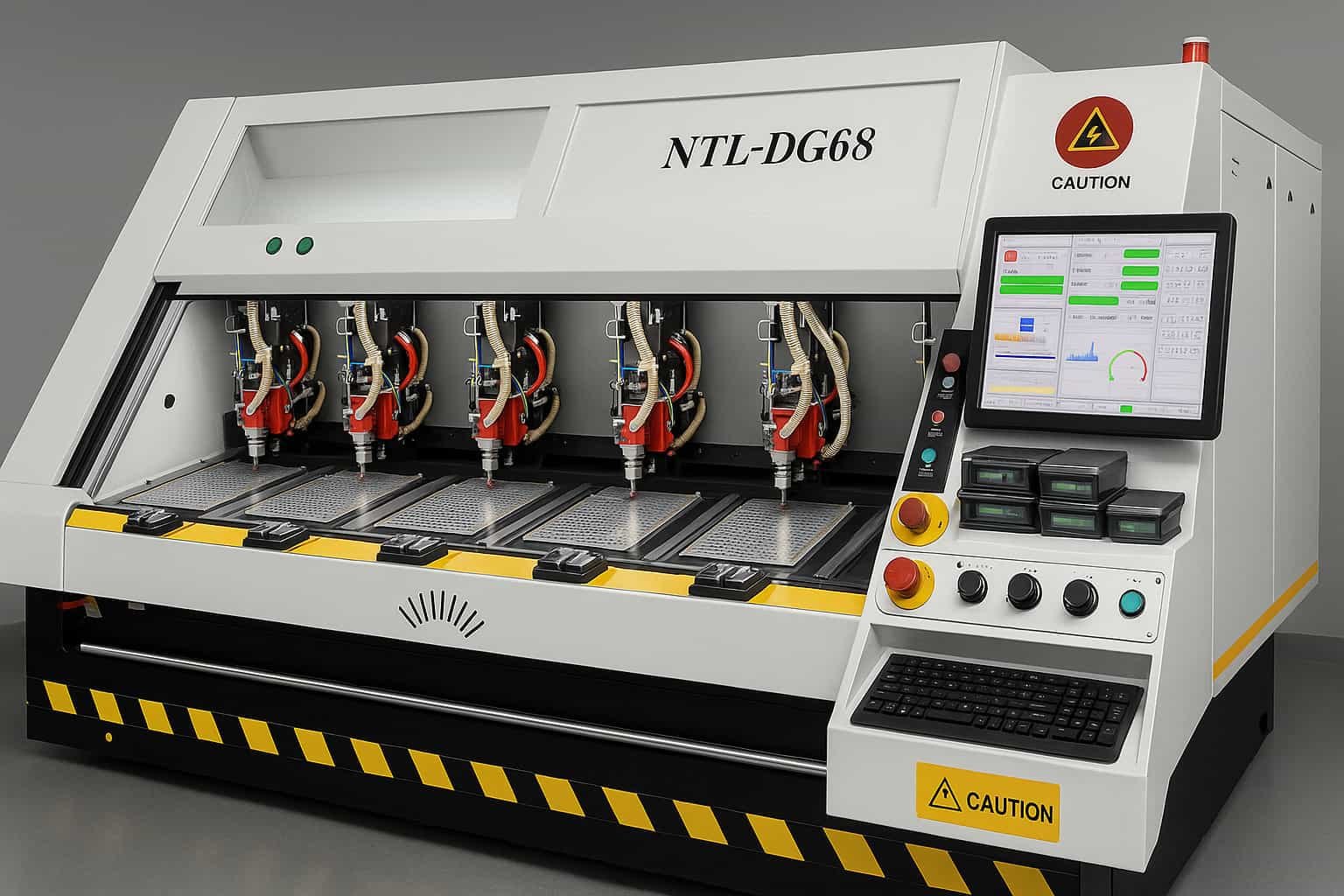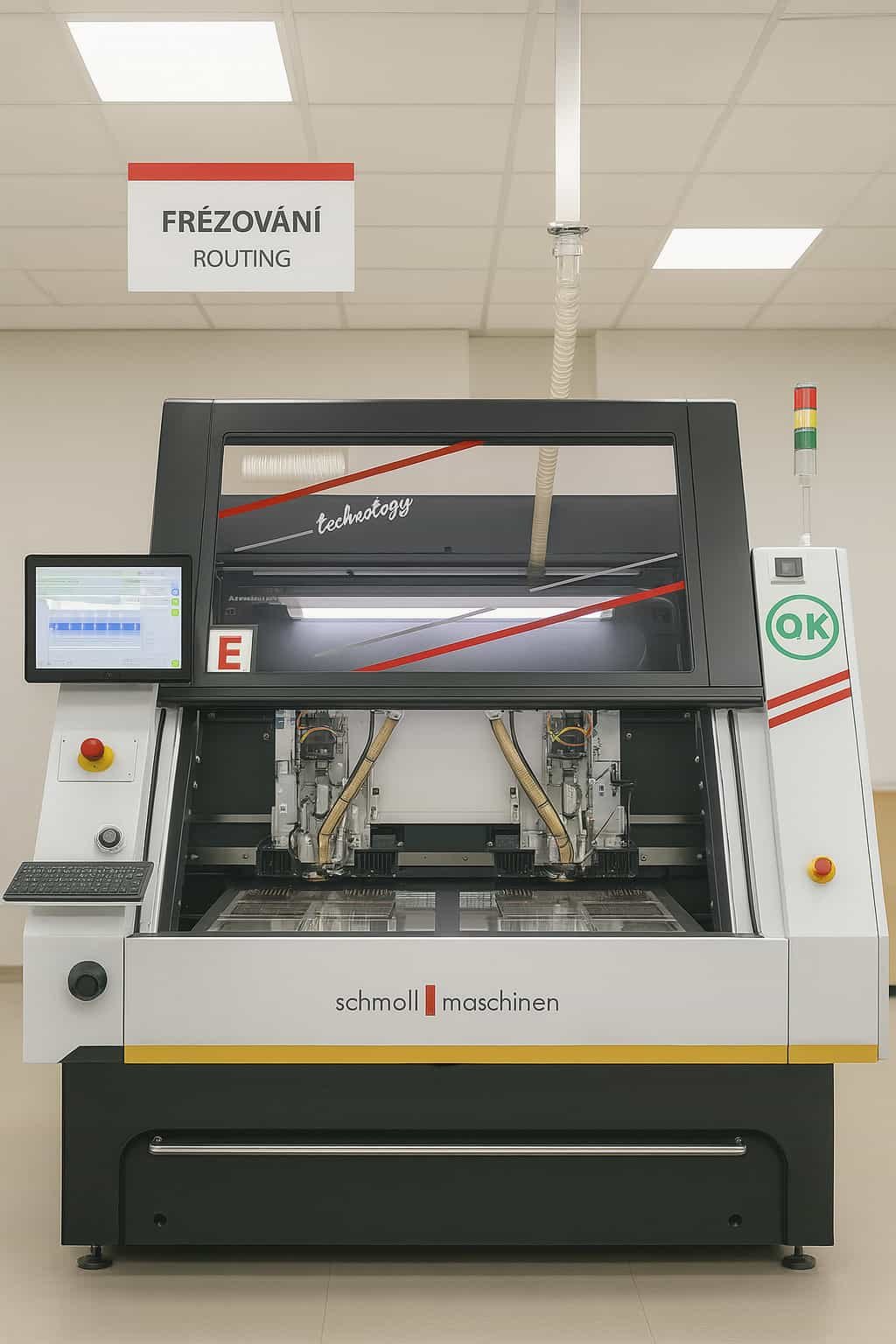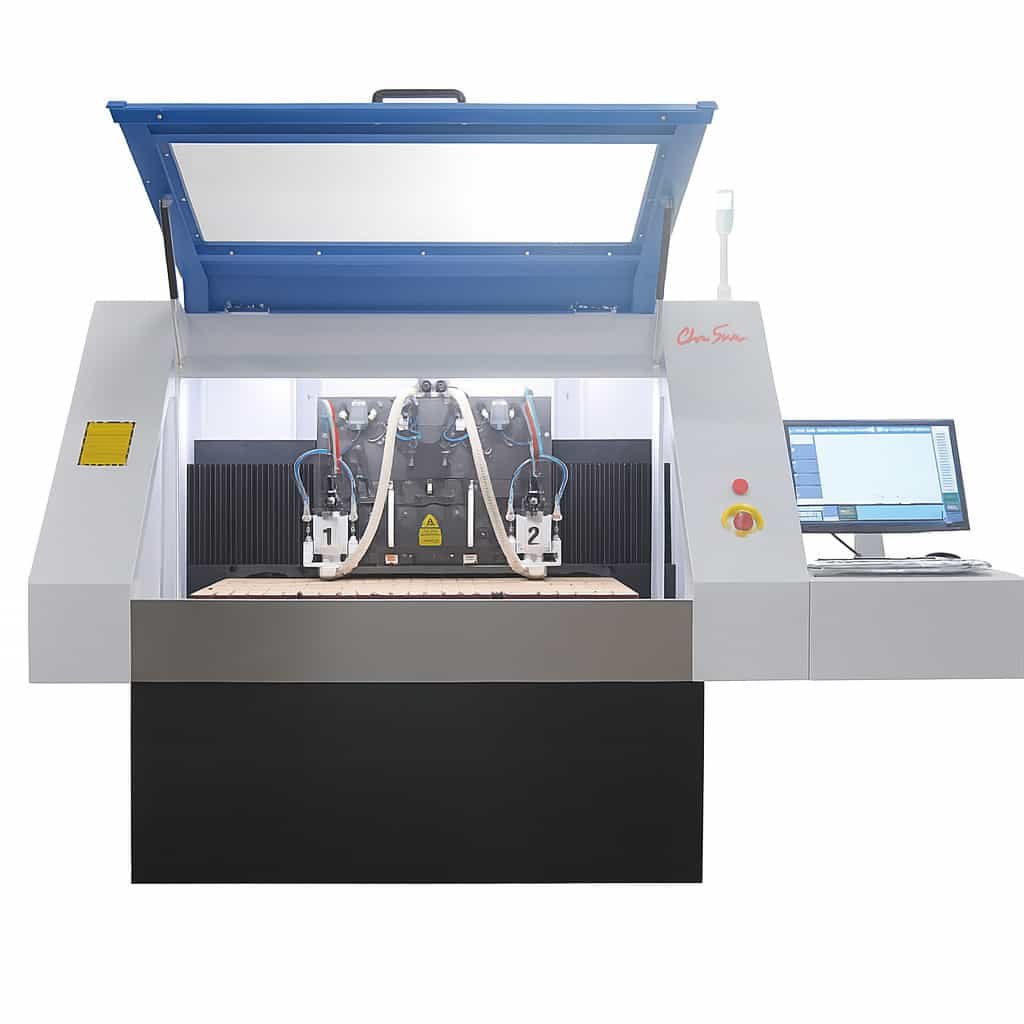What is a CNC Drilling Machine for PCB?
A CNC drilling machine for PCB (Printed Circuit Board) is a precision tool used to create holes in PCB materials through automated, computer-controlled processes. These machines enhance accuracy and efficiency in PCB manufacturing.
Key Features of CNC Drilling Machines for PCB
- Automated Precision: Uses computer numerical control (CNC) to guide the drilling process, ensuring precise hole placement.
- High-Speed Operation: Capable of drilling multiple holes quickly, enhancing production efficiency.
- Consistency: Maintains uniformity across multiple PCBs, reducing errors and rework.
How CNC Drilling Machines Work
- Design Import: The PCB design is imported into the CNC machine software.
- Setup: The machine is set up with the appropriate drill bits and materials.
- Drilling: The CNC machine follows the design instructions to drill holes at specified locations.
- Quality Check: Ensures all holes are drilled accurately before moving to the next production stage.
These machines are essential in modern electronics manufacturing, providing precision and reliability in PCB production.
How to Make a PCB Drilling Machine?
To make a PCB drilling machine, you need to gather essential materials, design a mechanism for precision drilling, and integrate electronic control for automation. Below are the steps to follow:

- Materials Needed:
- Stepper motors
- Drill bit and spindle
- Microcontroller (e.g., Arduino)
- Linear rails and bearings
- Power supply
- Frame materials (metal or wood)
- Design and Assembly:
- Frame Construction: Build a sturdy frame to hold the components.
- Motor and Rail Installation: Attach stepper motors to linear rails for X, Y, and Z-axis movement.
- Spindle Mounting: Secure the drill bit and spindle to the Z-axis.
- Electronic Integration: Connect the motors and spindle to the microcontroller.
- Software and Calibration:
- Firmware Upload: Upload control firmware to the microcontroller.
- Calibration: Calibrate the axes to ensure precision.
- Testing:
- Conduct test drills on a sample PCB to check accuracy and make necessary adjustments.
By following these steps, you can create a functional PCB drilling machine suitable for custom and small-scale PCB production.
What is CNC Machinery Used For?
CNC machinery, or Computer Numerical Control machinery, is primarily used for automated manufacturing processes. It precisely controls tools and machinery to produce parts with high accuracy and consistency.

Key Applications of CNC Machinery:
- Automotive Industry: Producing engine components, gears, and other critical parts.
- Aerospace: Crafting complex parts like turbine blades and structural components.
- Medical Devices: Manufacturing surgical instruments and implants.
- Electronics: Creating precise circuit boards and components.
- Prototyping: Rapidly producing prototypes for testing and development.
How CNC Machinery Works:
- Design: CAD software is used to create a detailed design.
- Programming: CAM software converts the design into a code (G-code).
- Execution: The CNC machine reads the G-code and performs the required operations.
CNC machinery enhances production efficiency, accuracy, and scalability in various industries.
What is the Advantage of a CNC Drilling Machine for PCB?
A CNC drilling machine for PCBs offers precision, efficiency, and automation, significantly enhancing the manufacturing process. It ensures accurate hole placements, reduces human error, and increases production speed.

Key Advantages of CNC Drilling Machines for PCB
- Precision: CNC machines provide high accuracy in drilling, ensuring that each hole is exactly where it needs to be. This precision is crucial for the functionality of the PCB.
- Efficiency: The automation of the drilling process reduces the time required to complete a PCB, leading to faster production cycles.
- Consistency: CNC machines maintain consistent quality across multiple PCBs, reducing the risk of defects.
- Reduced Labor Costs: Automation minimizes the need for manual labor, leading to cost savings in the long term.
- Versatility: These machines can be programmed to handle various PCB designs, making them adaptable to different production needs.
In summary, CNC drilling machines enhance PCB manufacturing by improving accuracy, efficiency, and consistency while reducing costs and labor.
How does a CNC drilling machine work for PCB?
A CNC drilling machine for PCB (Printed Circuit Board) operates by automating the drilling process with high precision and accuracy. It uses computer numerical control (CNC) to guide drill bits into specific locations on the PCB as per the design layout.

Key Steps in CNC Drilling for PCB:
- Design Input: The PCB design is created using CAD software and converted into machine-readable G-code.
- Setup: The PCB material is securely placed on the machine’s working table.
- Alignment: The machine aligns the drill bits precisely with the PCB layout.
- Drilling Operation: The CNC machine drills holes at designated positions to create vias and mounting points.
- Quality Check: The drilled PCB is inspected for accuracy and any defects are corrected.
Advantages:
- High Precision: Ensures exact placement of holes.
- Efficiency: Faster than manual drilling.
- Consistency: Reduces human error and variability.
By using a CNC drilling machine, manufacturers can achieve high-quality, reliable PCBs suited for various electronic applications.

